CODING
Step into the software world
We introduce the web world to our young people and children who want to step into the software world.
Learning to code for child and junior increases their analytical thinking abilities by gaining creative thinking and problem solving skills in the technological world.
Coding is the process of writing code in a programming language and giving instructions in a way that computers can understand. We can compare this to learning a new foreign language and using it in the country it belongs to. This acquisition is especially useful for digital and technology-oriented daily life, which will be of great importance in the business world in the future. Learning to code allows students to create unique projects using their imaginations, interact in the digital world and use technology for their goals.

As Digi-Homeschooling, we have created a professional roadmap for children and young people on how they can step into the software world and progress. Even if he has no knowledge of coding and computer use, we know how to introduce him to this world. Moreover, we make this training period fun and enable them to do it as an activity.
Let’s look at this roadmap (Coding Path) together.
For our students aged 8-10, we take the first step with Scratch.. Since it has a fun and simple interface, our students can continue their first step with fun without getting bored. Scratch is a fun and effective tool for teaching students programming skills and helps kids develop their math, logic and problem solving skills.
Our coding roadmap for students aged 8-10:
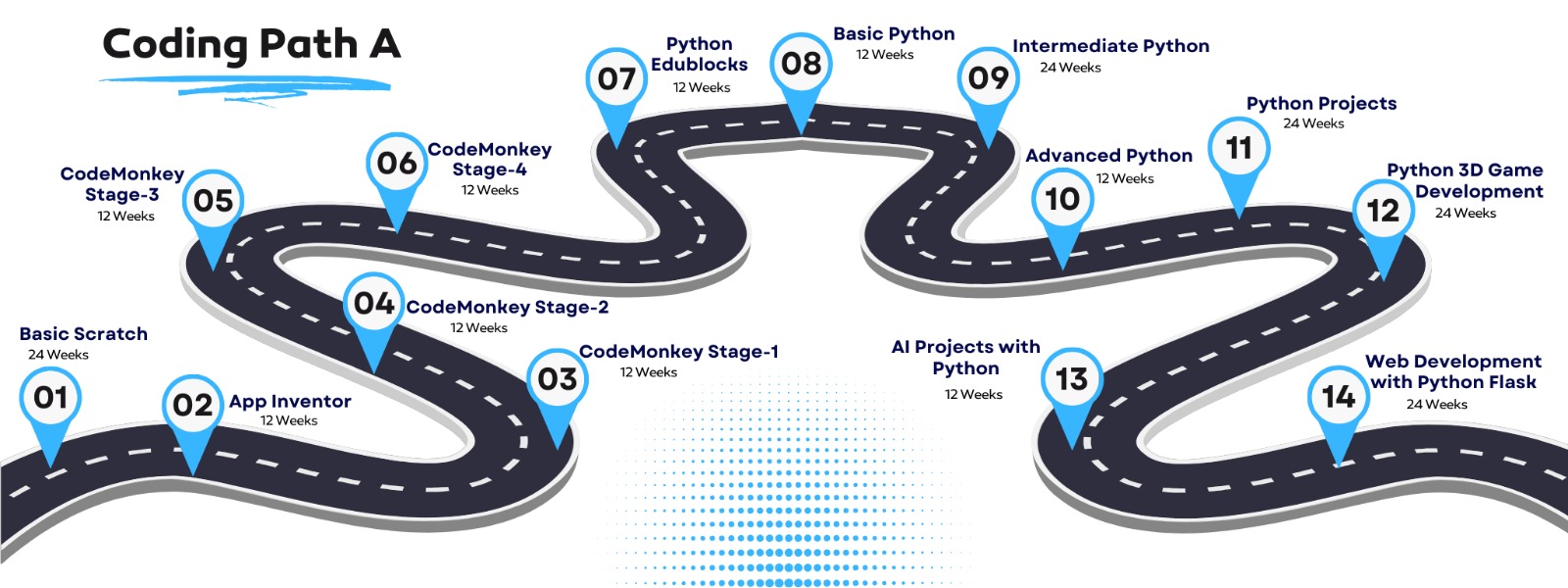



CodeMonkey Level-1
For our students aged 8-10, we take the first step with CodeMonkey. Since it has a fun and simple interface, our students can continue their first step with fun without getting bored. CodeMonkey is a fun and effective tool for teaching students programming skills and helps kids develop their math, logic and problem solving skills.

Basic Scratch
MIT University’s app called Scratch is a block-based programming language that helps students improve their programming skills. It has an interface that even those with no coding knowledge can easily understand. For beginners, Scratch is fun and easy.
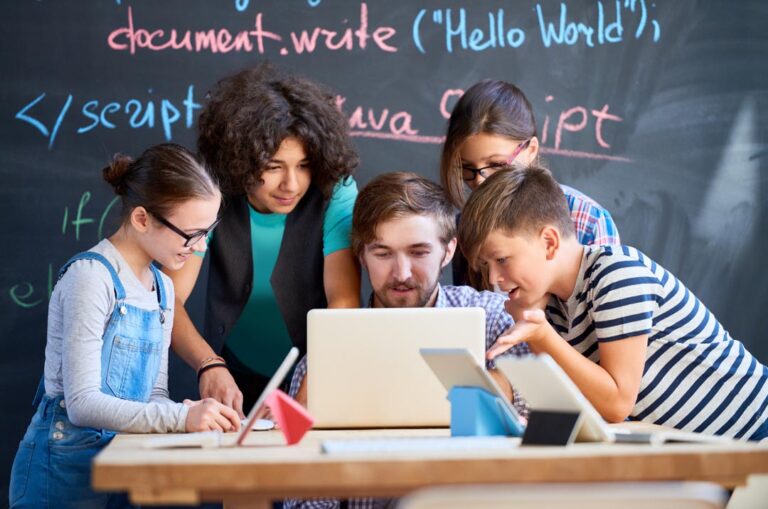
Advanced Scratch
In our training, algorithm development logic is built on Basic Scratch programming training. Our students develop the programming knowledge they learn in the lessons by making projects. In addition, our students will say hello to the world of artificial intelligence with Scratch by making machine learning applications with the Scratch

App Inventor
App Inventor provides a user-friendly interface for mobile application development, helping children to use their coding, design and imagination effectively. App Inventor allows users to create unique mobile applications. This encourages children to use their imaginations to realize their own productive ideas.
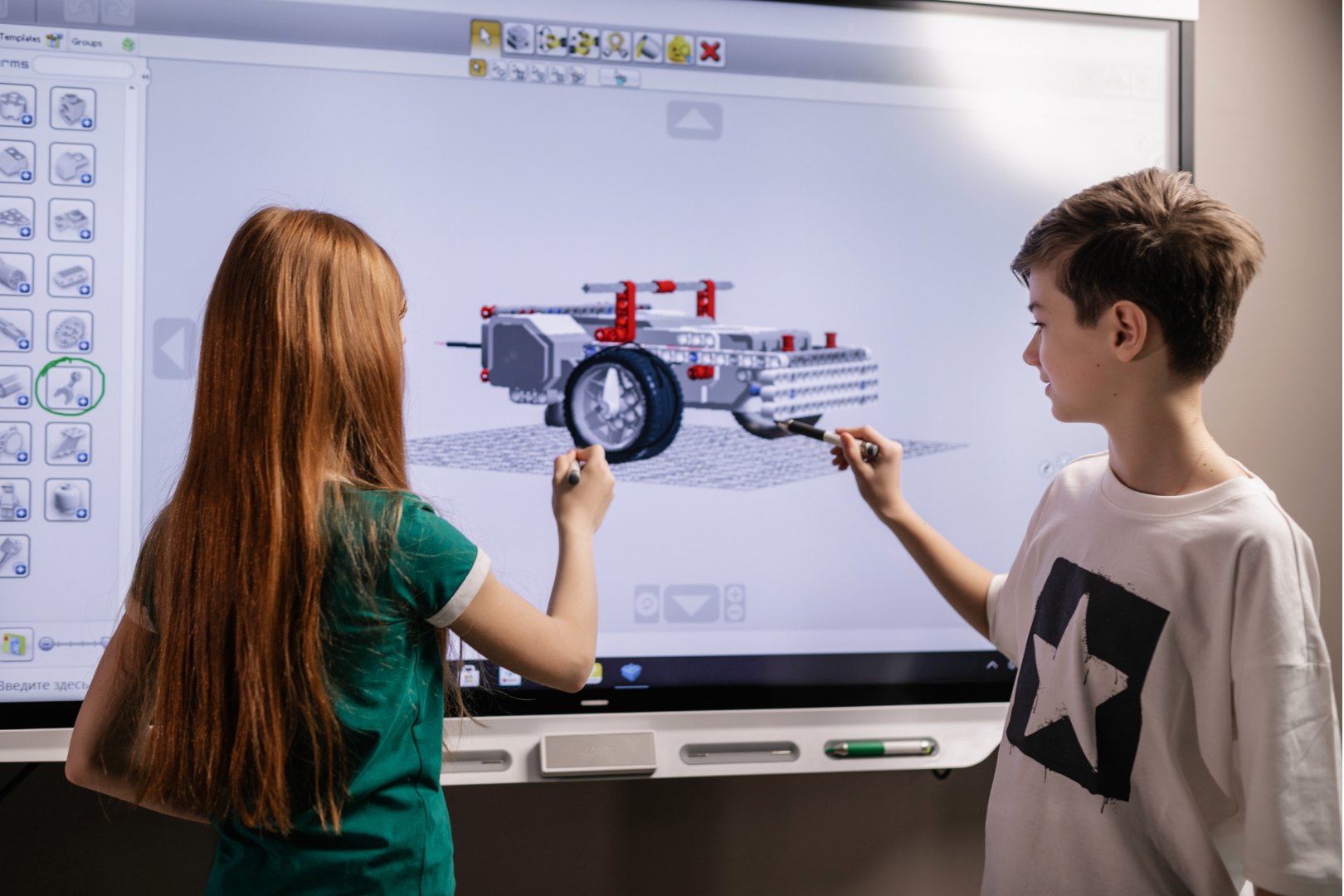
Code Monkey Level- 2, 3 ve 4
CodeMonkey Level – 2, 3 and 4 (modules) is a fun and simple curriculum for kids to learn text-based coding. With game and project-based lessons, 8-12 year old students take their first steps towards text-based programming. CodeMonkey encourages the development of motor skills such as problem solving, planning…

Robotic Coding
Our children’s futures depend on technology and coding skills. Our robotics coding lessons help your kids learn these skills. Ourtrainings allow our students to have fun while improving their productivity and problem-solving abilities. In this way, children better understand the digital world and discover the uses of technology in daily life.
Our coding roadmap for students aged 11-12: Coding Path-B
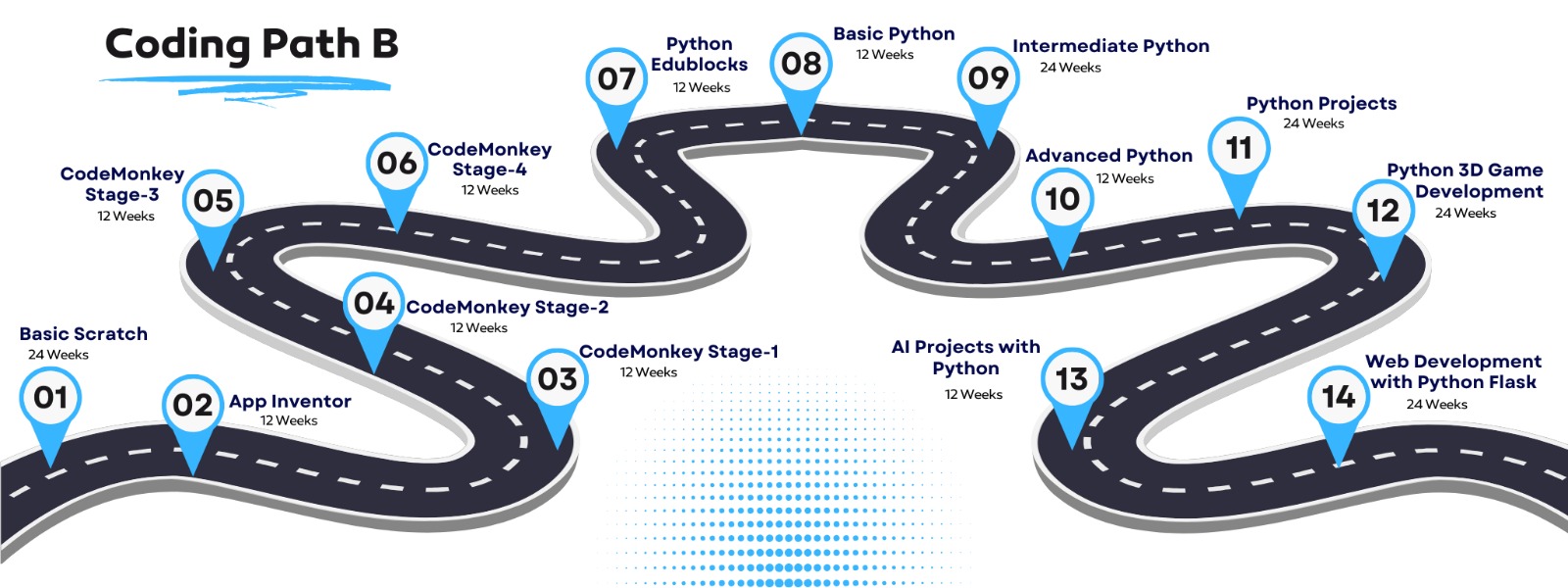

Basic Schratch
MIT University’s app called Scratch is a block-based programming language that helps students improve their programming skills. It has an interface that even those with no coding knowledge can easily understand. For beginners, Scratch is fun and easy.

Adcanced Scratch
In our training, algorithm development logic is built on Basic Scratch programming training. Our students develop the programming knowledge they learn in the lessons by making projects. In addition, our students will say hello to the world of artificial intelligence…

App Inventor
App Inventor provides a user-friendly interface for mobile application development, helping children to use their coding, design and imagination effectively. App Inventor allows users to create unique mobile applications. This encourages children to use their imaginations to realize their own productive ideas.

Python (Basic Level)
Python language is easy for children, teenagers to learn because of its simple syntax. Therefore, students can learn coding basics more easily, progress faster. Children who learn Python develop their problem-solving skills. Coding gives students problem-solving and reasoning skills. Basic Python lessons teach basic programming logic.
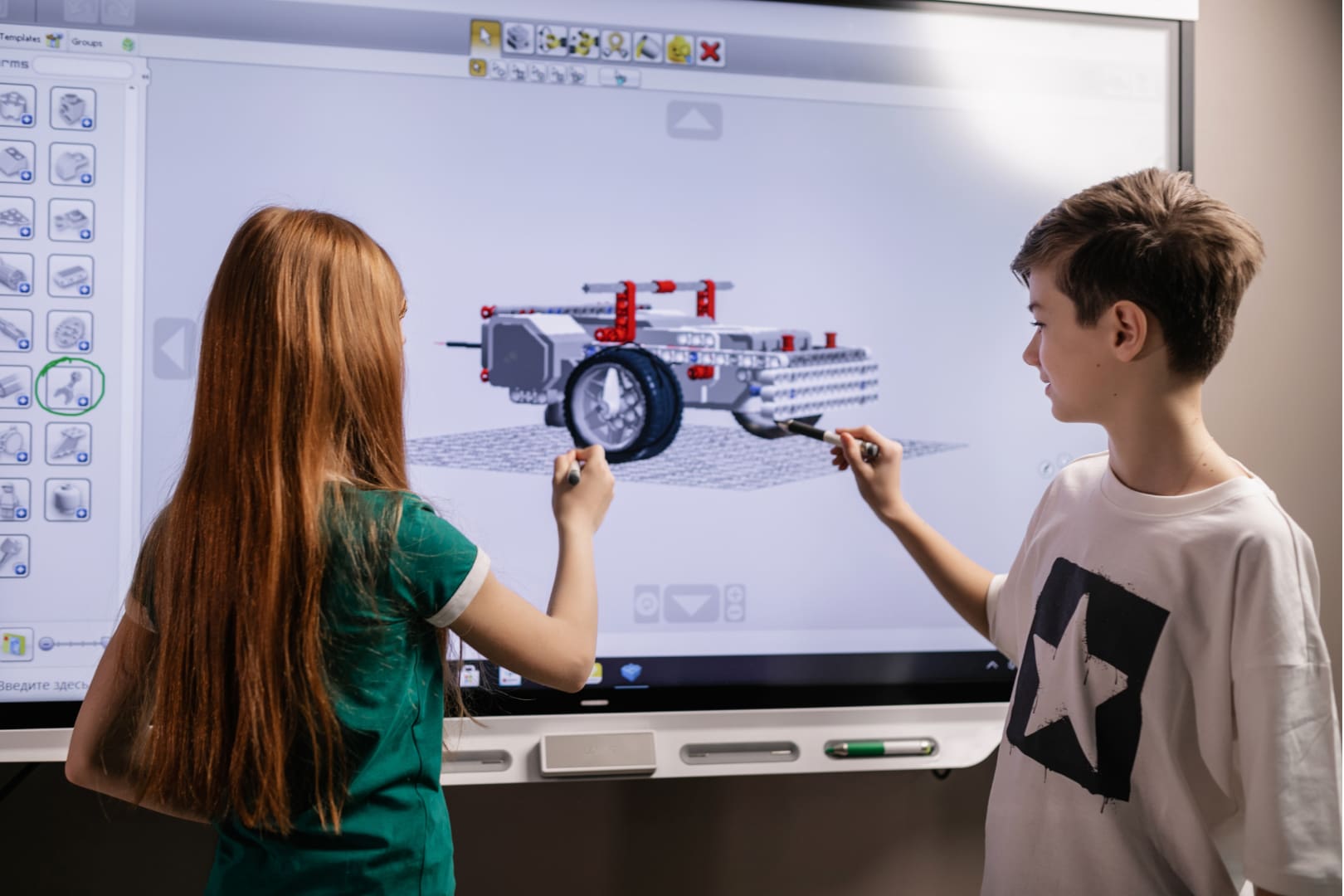
Python (Intermediate)
In our Intermediate Python coding training, algorithm development logic is built on basic programming training. Our students develop the programming knowledge they learn in the lessons by making projects. In addition, in this course, our students develop their text-based coding skills by making various games and applications with the Python programming language.

Python (Advanced)
In our Advanced Python coding training, projects are developed on basic and intermediate level programming training. Our students improve the programming knowledge they learned in the lessons by making projects. The aim at this level is to constantly practice in order to make all the knowledge learned up to this stage permanent. Thus, it is aimed to be ready for the real software world.

Robotic Coding
Our children’s futures depend on technology and coding skills. Our robotics coding lessons help your kids learn these skills. Our trainings allow our students to have fun while improving their productivity and problem-solving abilities. In this way, children better understand the digital world and discover the uses of technology in daily life.
Coding Path-C
Our coding roadmap for students aged 13-17:


Python (Basic Level)
Python language is easy for children and teenagers to learn because of its simple syntax. Therefore, students can learn coding basics more easily and progress faster. Children who learn Python develop their problem-solving skills. Coding gives students problem-solving and reasoning skills. Basic Python lessons teach basic programming logic.

In our Intermediate Python coding training, algorithm development logic is built on basic programming training. Our students develop the programming knowledge they learn in the lessons by making projects. In addition, in this course, our students develop their text-based coding skills by making various games and applications with the Python programming language.

Python (Advanced)
In our Advanced Python coding training, projects are developed on basic and intermediate level programming training. Our students improve the programming knowledge they learned in the lessons by making projects. The aim at this level is to constantly practice in order to make all the knowledge learned up to this stage permanent. Thus, it is aimed to be ready for the real software world.

Blender (Python Based)
Blender is an efficient 3D graphics program. It includes features such as modeling, animation, video editing and game development. Python, on the other hand, is a programming language and models produced with Blender can be coded with Python and turned into games, animations and various projects. For this reason, Blender and Python trainings are an indispensable opportunity for those who want to develop productive and fun projects.

Web Development (Frontend)
Web Development Frotend training aims to teach our students the basic skills needed to create websites and applications. In this training, students learn about programming languages and technologies such as HTML, CSS and JavaScript. In addition, students are taught the skills necessary to design, code and test websites and applications.

Web Development (Backend)
Web Development Backend training enables them to learn the skills needed to manage the coding processes behind websites and applications. Also, backend training helps teens develop analytical thinking and problem-solving skills. These skills play an active role in the future success of young people in the software field.
Start your learning journey
today!
Discover your path to success with our most innovative training program including apps, assignments, live chat and more. Enroll in our online course now!
